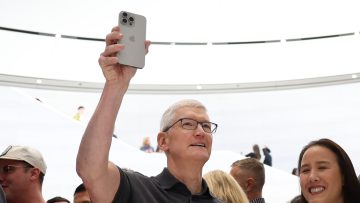Cord-cutting and the shift to streaming TV services poses an existential threat to pay TV companies. The last two years have seen record numbers of subscribers leave cable and satellite for much cheaper streaming services, resulting in price hikes from content owners and a great amount of navel-gazing.
Unfortunately for pay TV execs, the bad news just keeps rolling in. A new report from the Video Advertising Bureau shows that the number of households that use only streaming services has tripled since 2013. While the total number of cord-cutters isn’t worrying right now, the rate of growth certainly is, and the effect on TV advertising dollars — a crucial source of revenue for all TV channels — is noticeable.
According to the report, there are now 14.1 million households who only receive content via over-the-top streaming services. That makes up 11 percent of TV-watching households, which is still a drop in the bucket compared to the 74 percent who have a traditional pay TV service. Those 14.1 million households are even outnumbered by the 15 million households that rely on an antenna to receive free broadcast channels.
The VAB report highlights another trend that it paints as positive, but could come back to bite the cable industry. 70 percent of households that subscribe to a streaming service also subscribe to cable, which it interprets as meaning the two industries can happily live side-by-side.
Alternatively, it could mean that the streaming services — which are expanding their content library and growing more ambitious by the day — have a huge pool of customers who are just waiting for the streaming services to get good enough so that they can jump ship from cable. Consumer satisfaction with cable is consistently low — there’s a reason Comcast is one of the most hated companies in America — and streaming companies are increasingly looking at buying rights to live sports and events, which is the one big club that cable still has to wield.
Another recent study showed that the main reason most people still stick with cable is because it’s cheap when bundled with their home internet service. As new technologies like fixed wireless 5G make home internet cheaper and more competitive, cable comapnies will lose the advantage of the bundle pricing, and even more consumers are likely to defect.
All of this seems to be having an effect on the bottom line of the TV companies, not just the cable and satellite companies that distribute the content. An eMarketer report spotted by TechCrunch predicts that TV ad spending will drop by 0.5% in 2018, marking the second straight year of declining TV revenue. “The shift of audiences to OTT viewing is changing the climate of the TV ad market,” said eMarketer senior forecasting director Monica Peart. “As ratings for TV programming continue to decline, advertiser spending will also continue to see declines, especially in years that do not boast major events such as presidential elections and Olympic games.”










